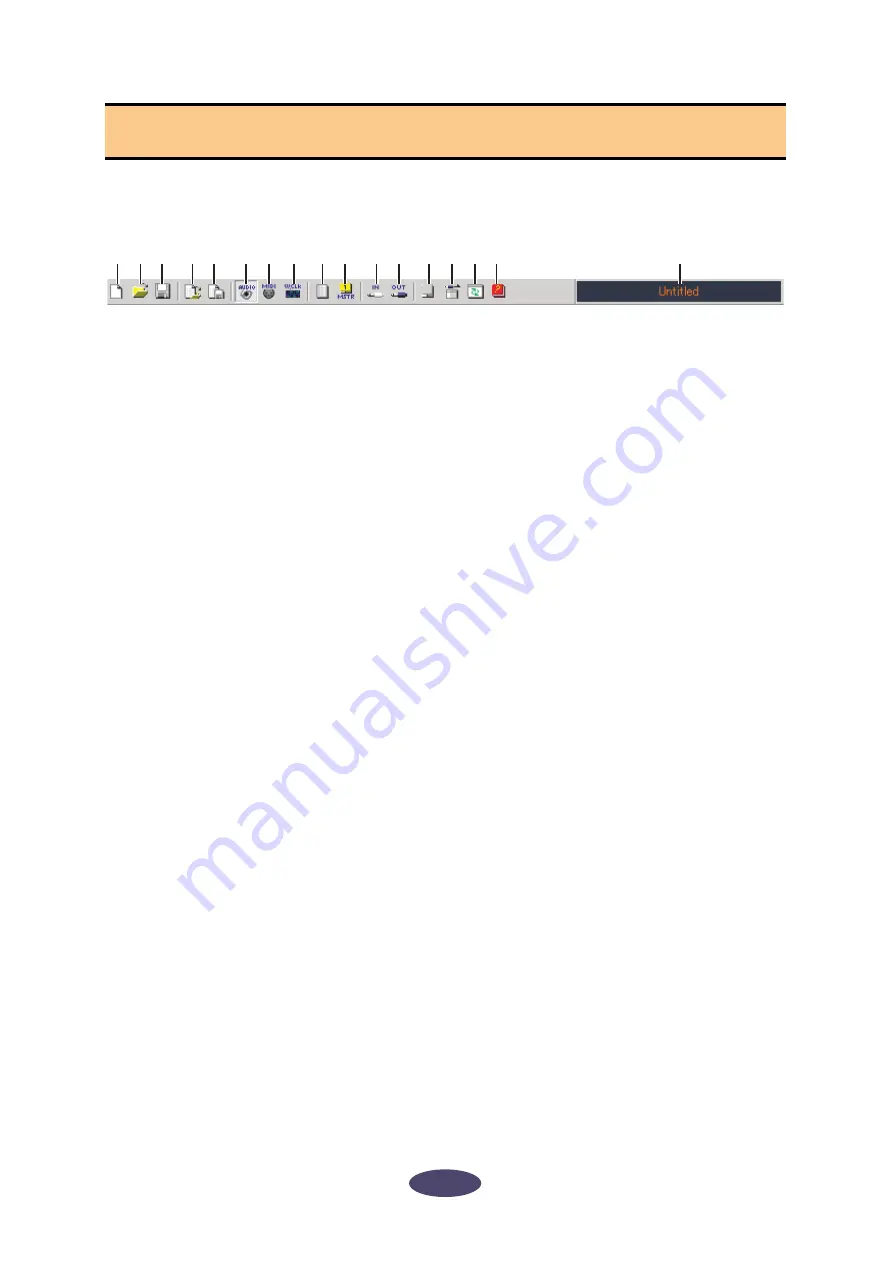
11
Clicking icons on the Tool bar enables you to use the same functions and commands that you can access
from the Menu bar. Icons for unavailable functions are grayed-out.
A
New
Creates a new default mLAN connection configuration and updates the graphic information. Select
this option to configure a new mLAN network.
You can also access this function by selecting [File], then [New] in the Menu bar.
B
Open
Opens an existing mLAN Graphic Patchbay (*.ymp) file and retrieves the stored mLAN connection
settings (page 33).
You can also access this function by selecting [File], then [Open] in the Menu bar.
C
Save
Saves the current settings by overwriting the current mLAN Graphic Patchbay file (*.ymp)
(page 33).
You can also access this function by selecting [File], then [Save As] in the Menu bar.
D
Open Template File
Opens an existing mLAN Graphic Patchbay template file (*.ymt) (page 33). You can also access this
function by selecting [File], then [Open Template File] in the Menu bar.
E
Save Template File
Saves the current mLAN template file in a new template file under a new name. You can also save an
existing template file as a new file under a new name (page 33). You can also access this function by
selecting [File], then [Save Template File] in the Menu bar.
F
Audio
Displays the Audio Connection window, which enables you to connect audio inputs and outputs
between nodes (page 25).
You can also access this function by selecting [Connection], then [Audio] in the Menu bar.
G
MIDI
Displays the MIDI Connection window, which enables you to connect MIDI inputs and outputs
between nodes (page 25).
You can also access this function by selecting [Connection], then [MIDI] in the Menu bar.
H
Wordclock (available only in Graphic view)
Displays the Wordclock Settings window, which enables you to connect wordclock inputs and
outputs between nodes (page 25).
You can also access this function by selecting [Connection], then [Wordclock] in the Menu bar.
Tool Bar
1 2 3 4 5 6 7 8
K L
9 J
M N O P
Q


























